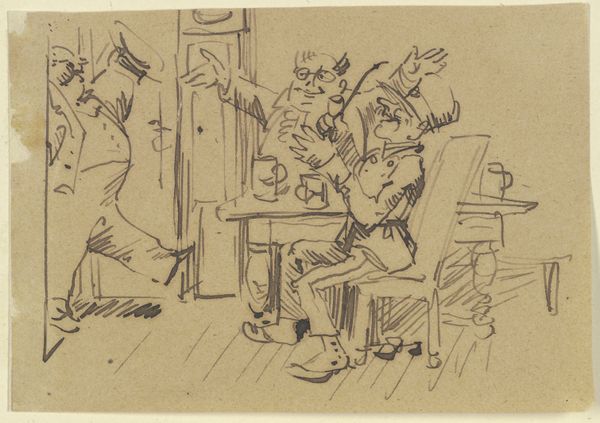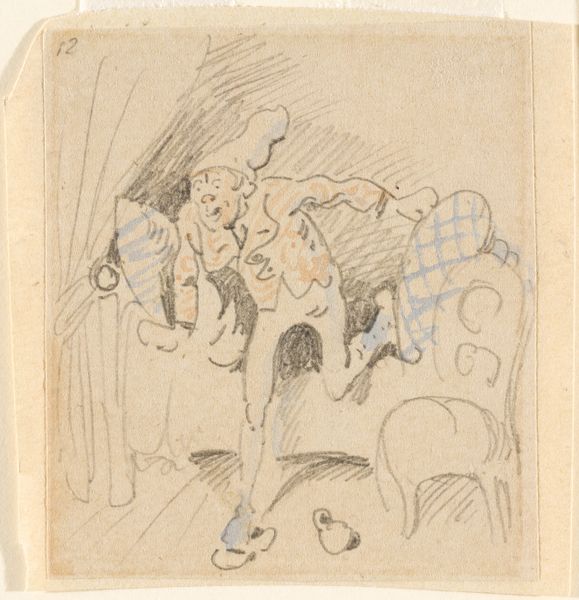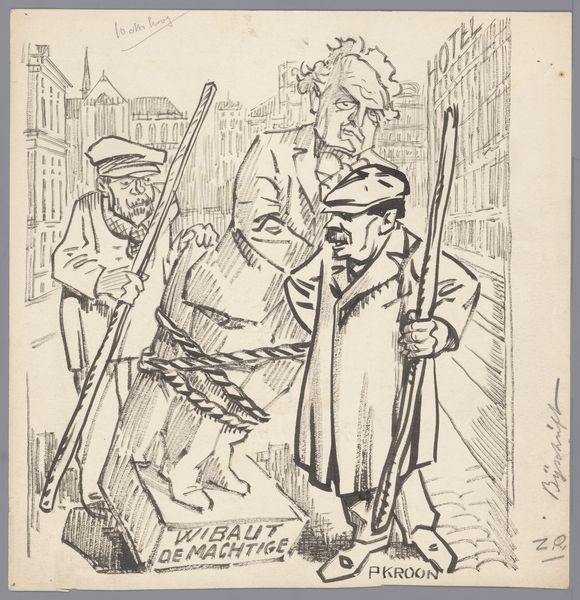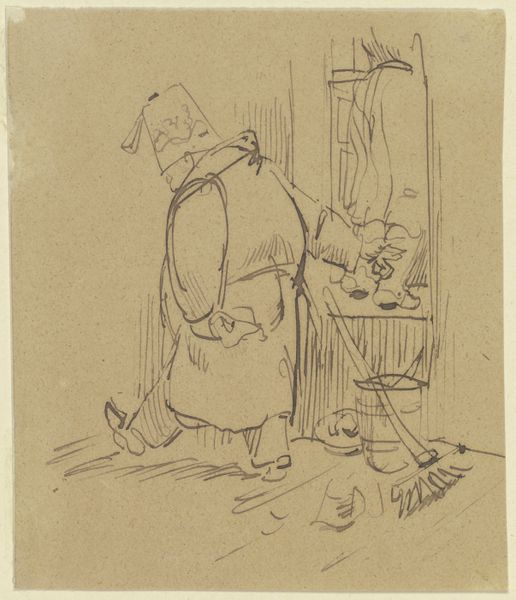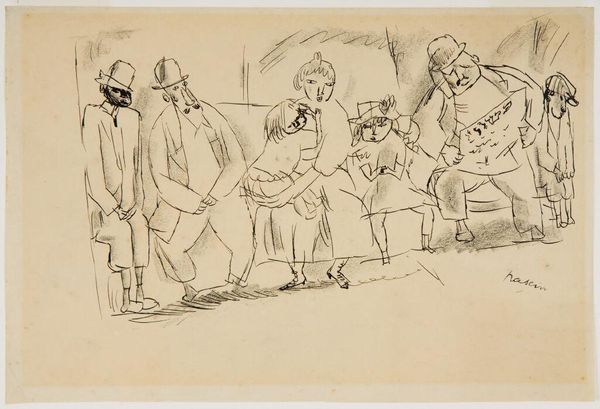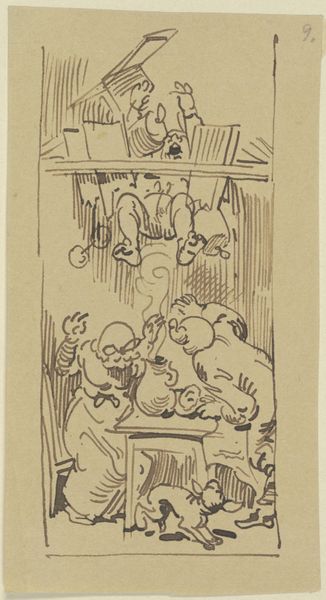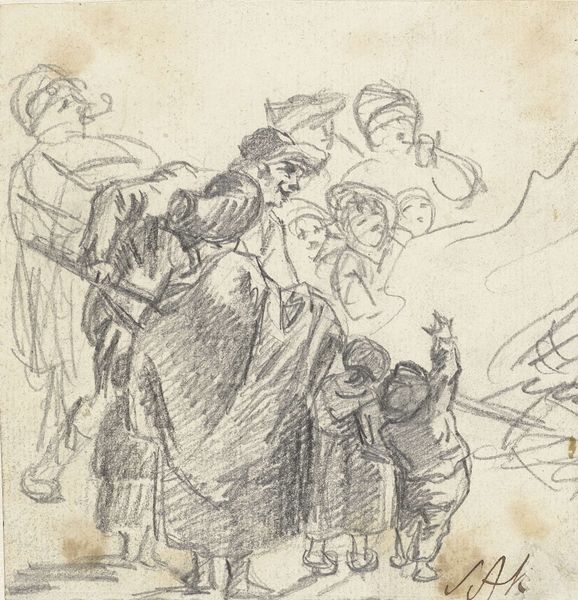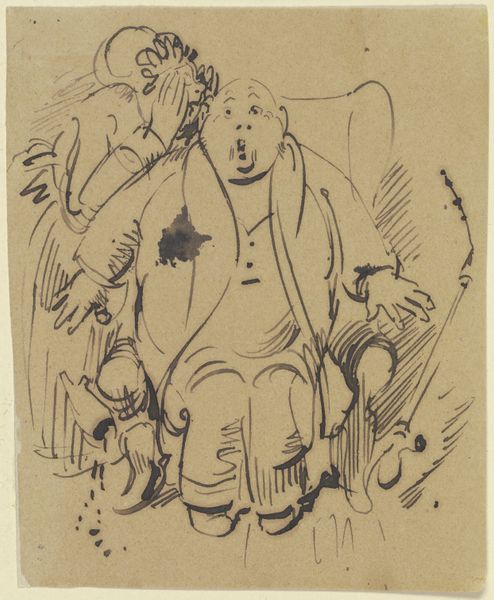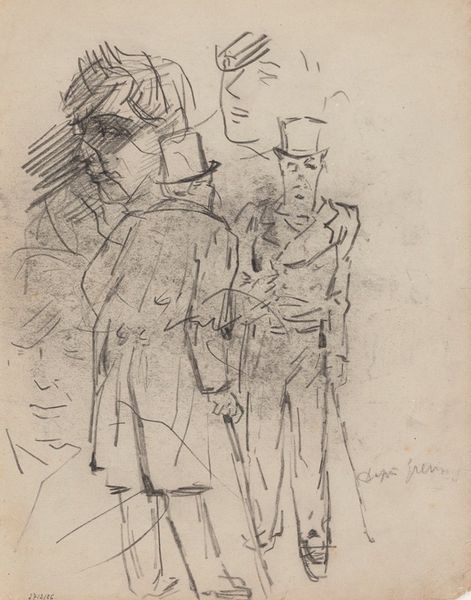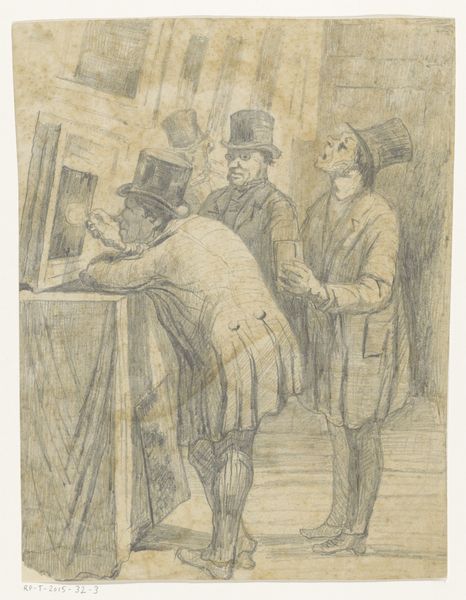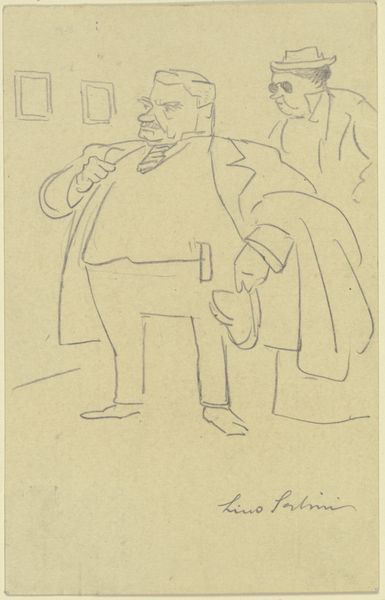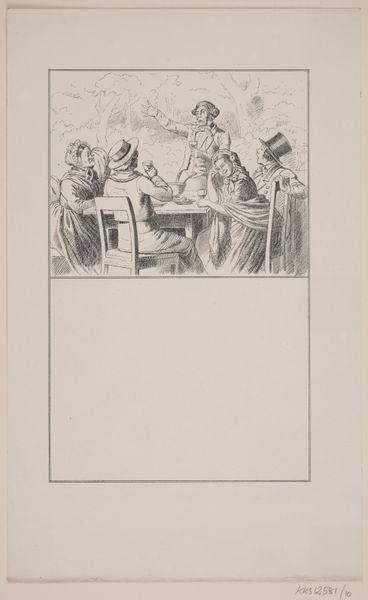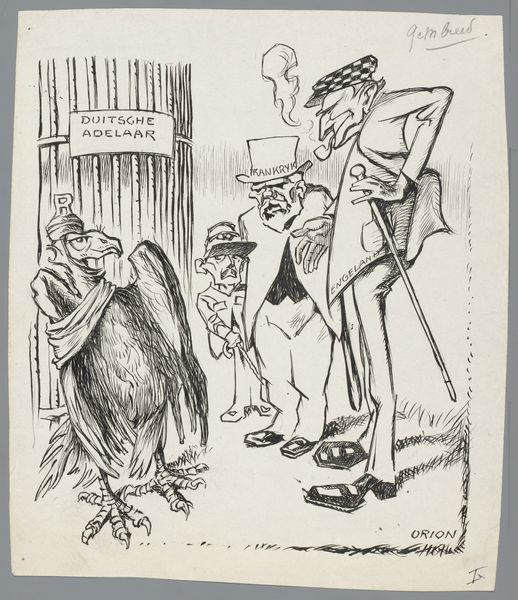
drawing, ink, indian-ink
#
drawing
#
imaginative character sketch
#
light pencil work
#
16_19th-century
#
narrative-art
#
caricature
#
cartoon sketch
#
personal sketchbook
#
ink
#
german
#
sketchwork
#
ink drawing experimentation
#
indian-ink
#
pen-ink sketch
#
comic
#
sketchbook drawing
#
genre-painting
#
storyboard and sketchbook work
#
sketchbook art
Copyright: Public Domain
Editor: Here we have Wilhelm Busch's "Mr. Knopp at the inn," made in 1876 with pen and Indian ink. It feels like a quick snapshot of everyday life, a bit cartoonish. What can you tell me about this piece? Curator: Well, I see a clear emphasis on the means of production here. Look at the roughness of the lines, the obvious process of the pen scratching across the page. This isn't about illusion; it's about the material reality of making an image, almost a storyboard feel, but rendered quickly. How might the context of late 19th-century German society be influencing the culture of that production, the accessibility and even value associated with it? Editor: That’s interesting. I hadn't thought about the process so much. What do you mean by 'culture of production' in this instance? Curator: Consider the tavern scene itself. Taverns were hubs of social interaction for working-class men. Is Busch commenting on labor, leisure, consumption and class? It also reminds me of popular illustrative journals from the 19th Century where printmakers often would translate paintings to a less 'elite' means. So what happens when Busch bypasses this translation through drawing with immediacy for the masses, democratizing visual access through material and social positioning. Editor: I guess this ink sketch allowed a more intimate, accessible form. He's both the artist and printmaker? Curator: Precisely. Busch is cutting out the middleman, using inexpensive materials, the artist gains increased control over both creation and its accessibility. He blurs the boundaries between "high" art and popular imagery. Editor: That's a cool idea, I learned how artistic means, especially materials, can imply much larger concepts beyond what the work "represents". Curator: Yes! The very act of sketching with ink, the portability and replicability, speaks to a desire for broader engagement. Busch exploits that tension beautifully.
Comments
No comments
Be the first to comment and join the conversation on the ultimate creative platform.
